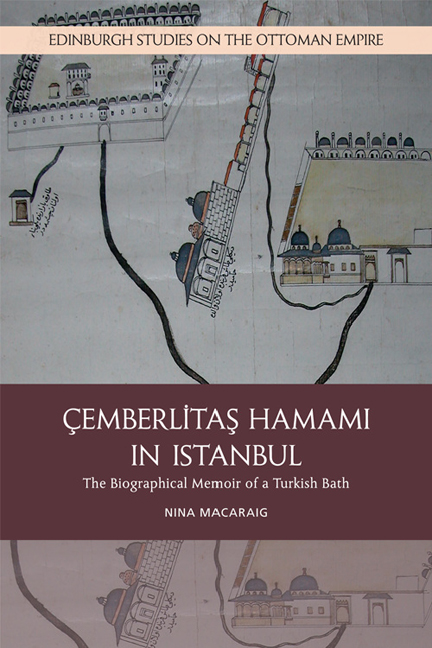Book contents
- Frontmatter
- Contents
- List of Tables
- List of Figures
- Preface
- Acknowledgements
- Note on Transliteration
- Introduction
- 1 Ancestry
- 2 Family
- 3 From Birth to Breadwinner
- 4 Impressions and Identity
- 5 In Sickness and in Health
- 6 Old Age
- 7 Second Spring
- Epilogue
- Appendix: Endowment Deed of the Atik Valide Vakfı (VGM, D. 1766)
- Notes
- References
- Index
6 - Old Age
Published online by Cambridge University Press: 28 April 2021
- Frontmatter
- Contents
- List of Tables
- List of Figures
- Preface
- Acknowledgements
- Note on Transliteration
- Introduction
- 1 Ancestry
- 2 Family
- 3 From Birth to Breadwinner
- 4 Impressions and Identity
- 5 In Sickness and in Health
- 6 Old Age
- 7 Second Spring
- Epilogue
- Appendix: Endowment Deed of the Atik Valide Vakfı (VGM, D. 1766)
- Notes
- References
- Index
Summary
It describes how the aforementioned hamam began to show signs of ageing, how it became a burden to the exalted valide sultan's pious endowment and how, because of that, its familial ties to the noble Friday mosque in Üsküdar became loosened. And it describes how the Protected City changed after the Hocapaşa Fire of 1865 and the novel ways of street building that mutilated the poor hamam, yet how bathhouses came to show to the Franks the wonderful achievements of the Domains under the House of Osman. And it describes how the Domain of the House of Osman gave way to the Republic of Turkey and how many noble architectural masterpieces became old doddering folks in the eyes of many Republican citizens, being neglected and even destroyed in many instances; how newspapers talked about the hamams of Istanbul, making them into emblems of a past long gone, but also decrying their destruction; and how this pleasurable hamam survived these indignities and continued to give services to the people of Istanbul, providing cleanliness and entertainment.
Renegotiating Family Relations
The Ottoman state of the eighteenth century was an empire weakened by military defeats and territorial losses. These failures led to an increased cultural exchange between Europe and the Ottomans, who felt the need to reform military technology and state organisation. In the second half of the eighteenth century, administration was transformed into a more centralised apparatus supported by a growing bureaucracy. Symptomatic of the state's financial problems, fiscal policy and increasing centralisation was the treatment of endowments and their properties during that time. Abdülhamid I (r. 1774–1789) established the Superintendence of Imperial Endowments (Evkaf-ı Hümayun Nezareti), to which he annexed the endowments of the imperial harem – that is, the endowments founded by imperial women, including the Atik Valide Vakfı. The purpose of the new ministry – which due to the maneouvering of the Chief Black Eunuch whose powers and interests it directly challenged soon became ineffective – was to create a legal and administrative framework to channel the endowment revenues into the near-empty state coffers, rather than back into the endowments. In order to attract more renters willing to invest capital into endowed revenue-generating property – now no longer supported by its own revenues – the ministry encouraged the already widespread practice of double rent (icareteyn) as the norm rather than the exception.
- Type
- Chapter
- Information
- Cemberlitas Hamami in IstanbulThe Biographical Memoir of a Turkish Bath, pp. 173 - 206Publisher: Edinburgh University PressPrint publication year: 2018

